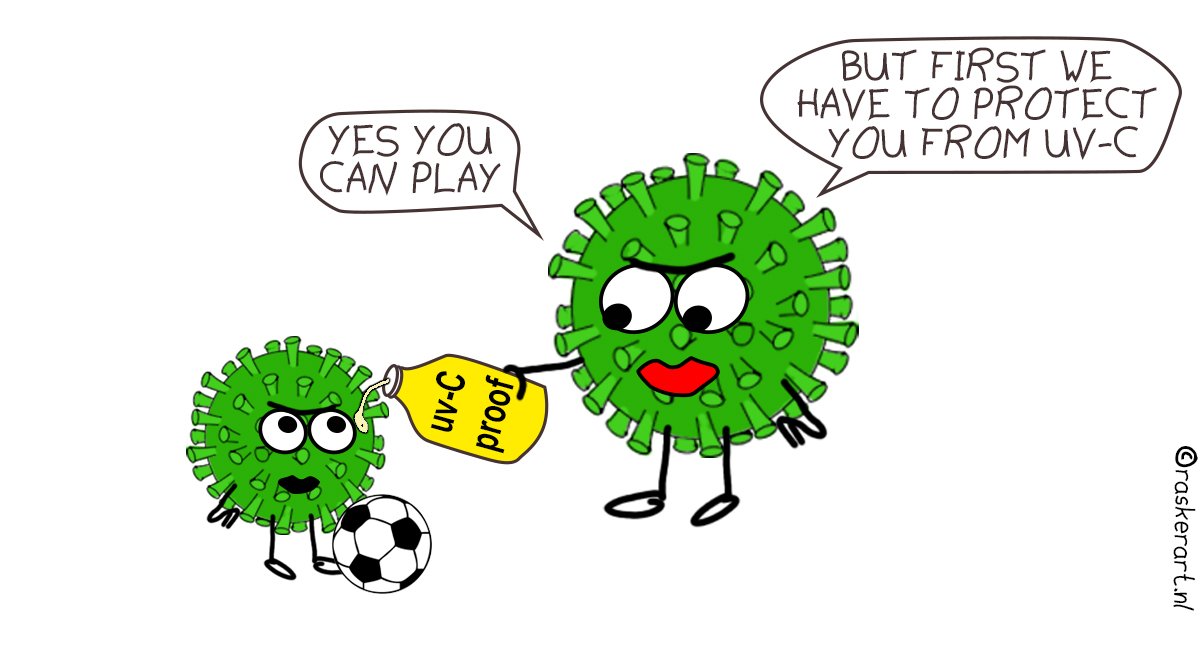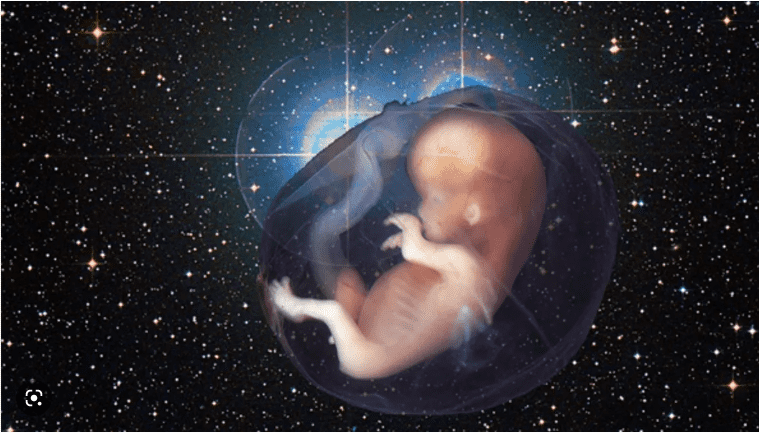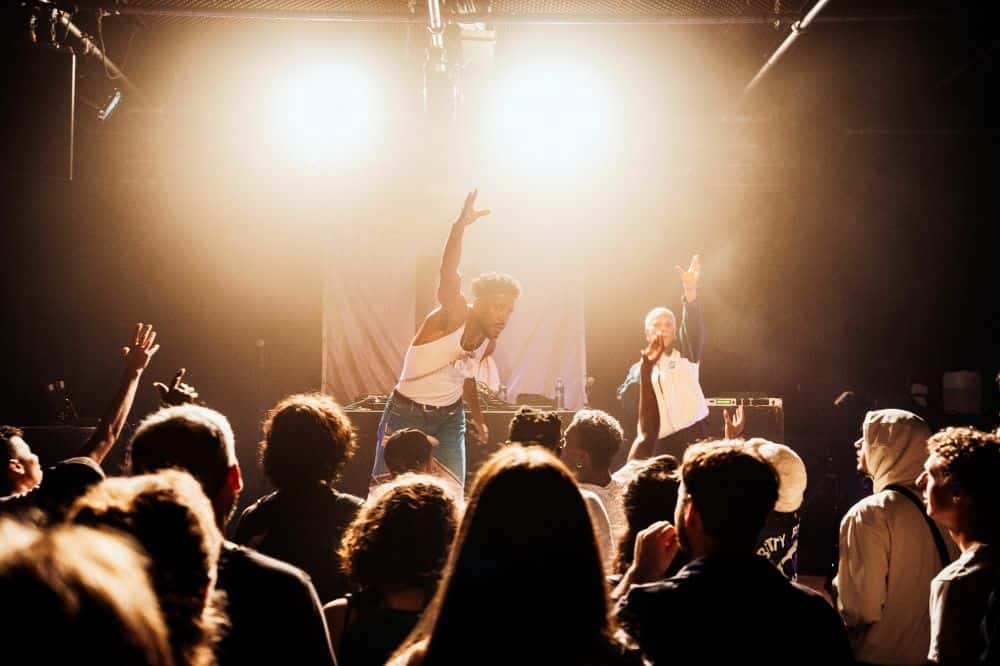
In the weekly ‘follow-up’ section we present a sequel to last week’s best-read article here on Innovation Origins. This week it was the story about UV-C light that might be able to inactivate the coronavirus. Here’s an overview of the applications for this insight, which is actually not even that new.
“UV-C radiation is really a very powerful tool for reducing the COVID-19 infection risk,” says Luc Schlangen, senior researcher Light & Health at the Dutch TU/e’s Intelligent Lighting Institute. “If the intensity and duration of exposure are high enough, UV-C radiation inactivates the virus particles that are present,” he explains. “It’s a valuable tool that fits perfectly into a broader disinfection program.”
Measles and tuberculosis
The use of UV-C radiation for disinfection is actually quite old, says Schlangen. “Ever since the 1940s and 1950s, UV radiation has been used in schools in the United States to prevent the spread of measles. It was also used in patients with tuberculosis.” With the advent of antibiotics and vaccination programs, the need to fight infectious diseases with UV radiation diminished, Schlangen goes on. “Consequently, the use of UV-C radiation against infectious diseases has somewhat receded into the background. Nowadays, it is often used to disinfect water or air ventilation ducts, for instance.”
“As a result of the COVID-19 pandemic, interest in UV-C radiation has exploded.” Partly because of this, Schlangen participated in a position paper written by the International Commission on Illumination (CIE) on UV-C radiation in the fight against the spread of the SARS-CoV-2 virus. Alongside his job as a researcher, Schlangen is also the director of one of the divisions within that international commission. CIE is an independent not-for-profit organization that brings together knowledge about light and lighting worldwide and draws up international standards and recommendations in this area. Technicians, designers, architects, installers, manufacturers, and scientists, such as Schlangen, are all associated with it on a voluntary basis.
UV-C doesn’t penetrate very far
“The power of UV-C radiation is that it doesn’t penetrate very far into materials.” Which is why it mainly damages the very small germs, microorganisms, and virus particles that are located on a surface. UV-C radiation on the skin can cause erythema, a red discoloration akin to a sunburn. Exposing the eyes to UV-C can cause snow blindness, says Schlangen. “These symptoms can develop up to twenty-four hours after exposure. Normally they disappear within the next twenty-four hours. That means that UV-C radiation does actually require safe handling.”
Dead outer skin cells block almost all UV-C radiation and therefore hardly any UV-C reaches the deeper layers of skin that contain living cells. Wavelength plays an important role here, Schlangen adds: “UV radiation with a shorter wavelength is less capable of penetrating deep into the tissue.”
Wavelength
Visible light has a wavelength between 400 and 800 nanometers. UV radiation cannot be seen. That is why Schlangen refers to UV-C radiation and not to UV-C light. Schlangen goes on to explain that just below visible light, there is UV-A radiation with a range of up to 315 nanometers, which easily reaches the earth. UV-B radiation ranges from 315 to 280 nanometers and hits the earth to a limited extent. “UVA and UVB radiation contribute substantially to how human skin gets burnt in the sun.”
UV-C does not reach our skin by natural means. When it does reach our skin, it invariably comes from an artificial source. This radiation has wavelengths of anywhere from 280 to 100 nanometers. It tackles microorganisms and germs. Schlangen: “The shorter wavelengths in this UV-C range can still effectively deactivate germs. They also have the advantage of penetrating less deeply into the outer layers of skin and the cornea. Therefore, the radiation is highly likely to cause less damage there and the health risks are lower. Research and innovation are now taking place in this area.”
Mobile robot
Several companies are offering products that work with UV-C radiation. Like the robot Thor UVC from YouVC. At the Dijklander Hospital in the Dutch city of Hoorn, for example, an autonomous mobile robot is disinfecting the intensive care units. No one is present then. Or the new device from MedTech start-up UV Smart that disinfects mouth nozzles. “It looks like a microwave that holds a face mask. Which is then irradiated with UV-C for about a minute and a half,” says physician-microbiologist Jan Sinnige from SteekLab Haarlem, who tested the product for the start-up company. “You can wash your hands in the meantime.”
Sinnege: “That’s a stopgap solution because face masks are designed to be thrown away.” It was worth exploring whether UV-C radiation could be beneficial due to the shortage of face masks. Sinnege continues: “The inner filter layer is not adequately exposed for complete sterilization. But it is sufficiently effective for disinfection of the outer surfaces and therefore safe for reuse on that day.”
It also appears that the UV radiation leaves the fibrous structure and the filter intact. Sinnige: ” As well as disinfection of masks, the device can be used for disinfection of small medical devices such as stethoscopes.”
With this kind of microwave-like product, you can be sure that anything thing laid inside it and that is exposed everywhere to UV radiation, will be safely disinfected, Schlangen states. “But there are also products, mostly consumer products, that do not come with that guarantee. You may use them too carelessly, too briefly, or from too far away so that the dosage is too low. For example, you may think that your phone has been disinfected, while that’s essentially a false sense of security. Which could be even more dangerous”.
Disinfection strategy
Even a robot may not have disinfected everything in the room. Radiation from a mobile UV robot does not reach everything, Schlangen states. “For instance, the rear part of a door handle.”
He, therefore, emphasizes that UV-C can never be used as the only means to disinfect rooms. “It fits as part of an overall disinfection strategy. You have to think about whether everything in the room is disinfected. And what you do with those places where the UV radiation can’t reach. It should also be taken into account that UV-C radiation may accelerate the aging of materials.”
Mark Vreeswijk, director of LED design in Hengelo, the Netherlands, has noticed that the demand for UV-C radiation is increasingly coming from quarters other than the medical world. His company came on the market at the beginning of May with a product that purifies polluted air. “We have clients in areas such as the sale and rental of cars, offices with flex spaces and meeting rooms, general practitioners and dentists, petrol stations, and supermarkets.”
There is a direct variant and an indirect one. With the direct one, no people are allowed in the room. With the indirect variant, lamps with UV radiation are housed in closed units through which the air circulates, Vreeswijk explains. “Everything that goes through these conduits is disinfected. Often those light sources are also positioned at a height of two and a half meters. So you can’t come into contact with them at all.”
According to Vreeswijk, this is “an ideal solution for rooms where a new risk enters every 10 minutes, but where you simply cannot constantly disinfect everything.”
And to what extent is it reasonable to think that UV-C seems almost like a miracle solution for now?
Schlangen: “It’s clear that UV-C is a powerful tool in the fight against the coronavirus. But a lot is still unclear. Such as the influence of that shorter wavelength. You expect it to work just as well and pose fewer health risks, but we don’t know for sure yet. It’s complex and time-consuming to determine long-term health risks.” Between August 14 and 27, the CIE is organizing a tutorial on the measurement of optical radiation and its photobiological effects. “By doing this, we are pooling and increasing worldwide knowledge about light and other optical radiation and are ensuring its international applicability.”







